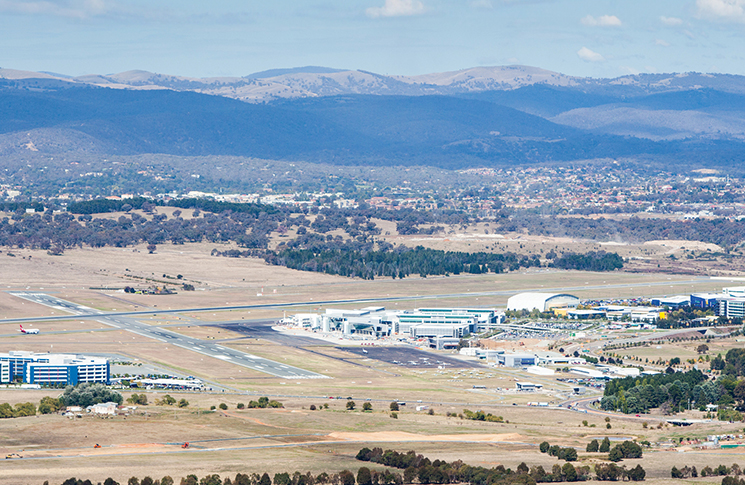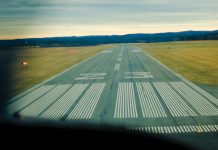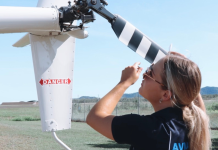It was another beautiful day in the national capital – variable winds with a change of active runways mid-session, but overall, good conditions for a sortie.
In the left-hand seat of our light sport aircraft (LSA) was a student working hard to get to first solo standard; in the right seat, yours truly, his flight instructor. Six months into the job, I was enjoying the challenge of helping students grow as aviators and the reward of seeing them reach their goals and succeed.
My student had done some flight training in uncontrolled airspace, so naturally, the transition to training in Canberra, a class C airport, has its challenges. Still, he had improved significantly since first showing up at our school and continued to improve.
On the day of the incident, a Cessna was returning from a local flight. It was inbound from the south and cleared for circuits on runway 30, with a left circuit.
At this time, our aircraft was conducting a touch and go on 30 and then climbing on upwind. My student asked me about the circuit direction. As students and instructors alike can attest, the circuit direction is easy to forget when going around and around the pattern! (Hot tip: state aloud the clearance as part of final checks; for example, ‘runway 30, cleared touch and go, right circuit.) As a teaching point, I suggest my students should be prepared to request the circuit direction with ATC, if unsure.
After my student asked for confirmation of circuit direction, the controller addressed the wrong aircraft – the Cessna – and said, ‘It was a right circuit but your choice.’ I reached for the push-to-talk but the Cessna pilot responded before I could, giving a readback for a right circuit on 30, despite being cleared initially for a left.
Then the controller responded by trying to clarify who had asked for circuit direction. Once again, I tried to jump in to clarify that it was our LSA but was beaten to the punch.
I waited my turn and then clarified we had asked. The controller then confirmed we were cleared for a right circuit on runway 30.
The Cessna pilot asked if right circuit was still intended for him. The controller confirmed and said the Cessna will be ‘number 2 to the LSA on early right downwind, runway three zero.’
The controller told the C150 pilot, ‘The LSA is at your 12 o’clock, passing left to right’, to which the pilot replied, ‘looking’.
Just before that, we had received approval for a glide approach and, being early downwind on a right circuit that took us past and around Mount Ainslie, we started to narrow our circuit spacing to make the glide work.
As my student was piloting the aircraft and readying himself for the glide that was imminent, I looked out to try to spot the Cessna. I could not imagine we would be sequenced too close. I thought we were clear of him, given the explanation that we had been passing his 12 o’clock, left to right – that is, he was on a right crosswind.
Shortly after, the controller said to the Cessna pilot that it looked like he had just turned right onto downwind and was now parallel to us. However, that pilot said he hadn’t seen us and was still looking.
The controller said, ‘In that case, make right turn now.’
With no response from the other pilot, the controller said to him, ‘traffic off to your left’, punctuating each of the next words to stress urgency, ‘turn – right – now.’
At the same time, I told my student I was taking over and immediately began evasive action – the Cessna had finally caught my eye, off to our right! I immediately declared, ‘LSA [callsign] making left orbit due traffic.’
While a collision was averted, we came very close together and, I believe, would certainly have collided had we not turned!
As we banked, I heard the Cessna pilot say, ‘wow … close … traffic sighted.’
After a short moment of silence on the radio, the controller instructed the Cessna to continue downwind.
As we banked, I heard the Cessna pilot say, ‘wow … close … traffic sighted.’
My student was none the wiser about where the Cessna was or the loss of separation that had occurred.
It is a humbling reminder to me of the responsibility that comes with being an instructor and just how much our students count on us, especially when the unexpected happens or safety margins become compromised, or things just go plain wrong.
Reviewing FlightRadar later showed the Cessna’s flight path downwind when this incident occurred – it was a straight line, unchanged – and did not turn right as instructed in the safety alert.
Lessons learnt:
After the confusion that arose over the circuit direction request, I had warned my student (and myself) to keep tabs on the Cessna. However, little did I suspect a close encounter would occur so soon after.
I now use AvTraffic on my tablet to supplement situational awareness. While it may not have made a difference in this case, I also encourage my students to speak up if they see traffic and tell them that 2 pairs of eyes and ears are better than one!
While some pilots take comfort in being controlled in a radar environment, this incident is an important reminder of the need to see and avoid, listen carefully and take appropriate action to avoid conflict. Doing only as we were told to do and relying on the other pilot to do as instructed, would have ended badly for all of us.
Mistakes happen and no-one was hurt but we all walked away a little wiser, with some valuable lessons.
Controlled airspace and aerodromes are one of the special topics on our Pilot safety hub. Refresh your knowledge at casa.gov.au/pilots.
Have you had a close call?
8 in 10 pilots say they learn best from other pilots and your narrow escape can be a valuable lesson. We invite you to share your experience to help us improve aviation safety, whatever your role.
Find out more and share your close call.
Disclaimer
Close calls are contributed by readers like you. They are someone’s account of a real-life experience. We publish close calls so others can learn positive lessons from their stories, and to stimulate discussion. We do our best to verify the information but cannot guarantee it is free of mistakes or errors.





